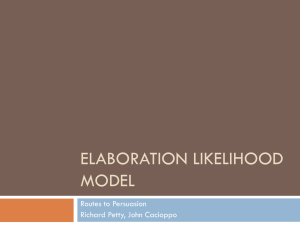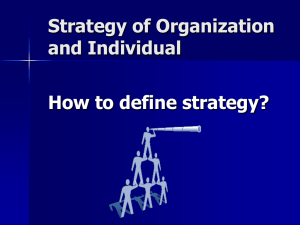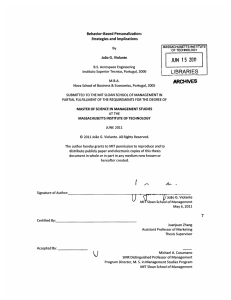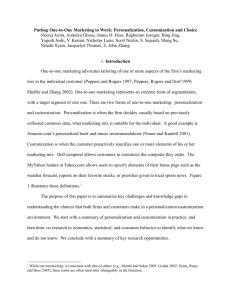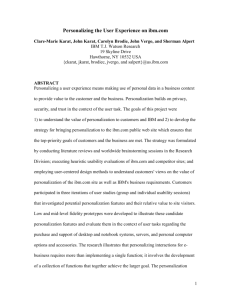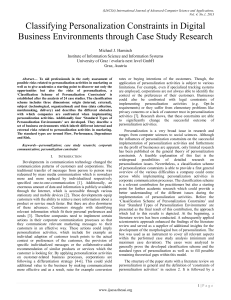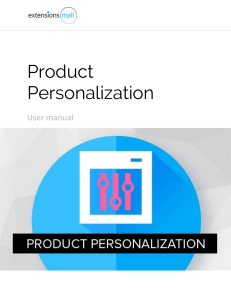Web Personalization as a Persuasion Strategy
advertisement
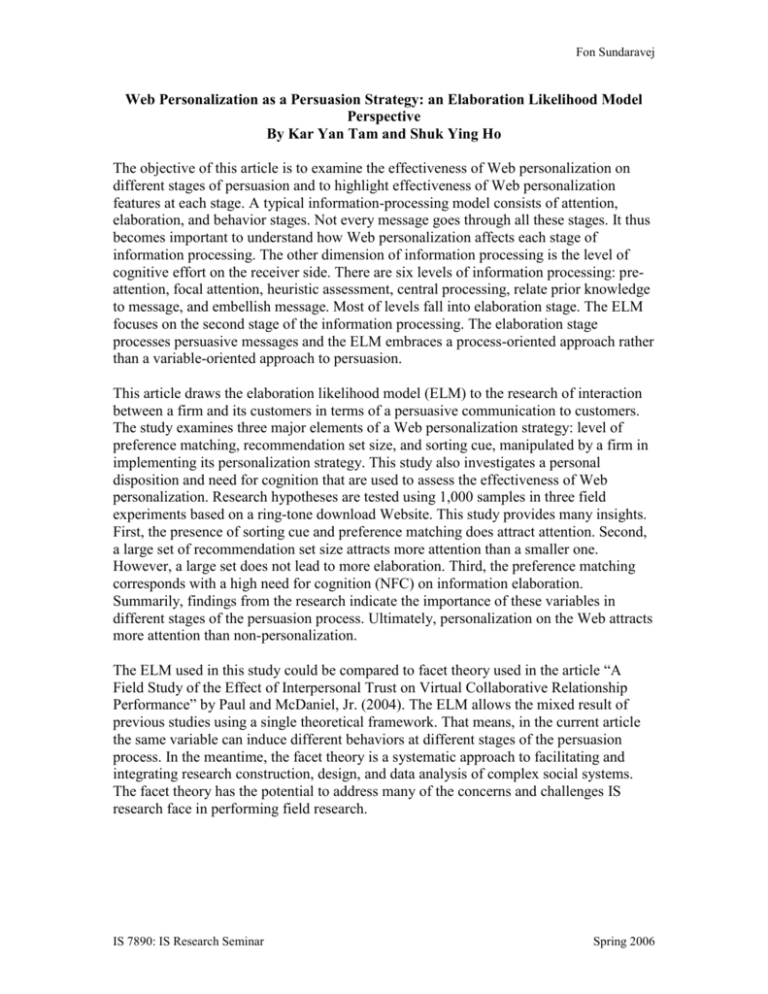
Fon Sundaravej Web Personalization as a Persuasion Strategy: an Elaboration Likelihood Model Perspective By Kar Yan Tam and Shuk Ying Ho The objective of this article is to examine the effectiveness of Web personalization on different stages of persuasion and to highlight effectiveness of Web personalization features at each stage. A typical information-processing model consists of attention, elaboration, and behavior stages. Not every message goes through all these stages. It thus becomes important to understand how Web personalization affects each stage of information processing. The other dimension of information processing is the level of cognitive effort on the receiver side. There are six levels of information processing: preattention, focal attention, heuristic assessment, central processing, relate prior knowledge to message, and embellish message. Most of levels fall into elaboration stage. The ELM focuses on the second stage of the information processing. The elaboration stage processes persuasive messages and the ELM embraces a process-oriented approach rather than a variable-oriented approach to persuasion. This article draws the elaboration likelihood model (ELM) to the research of interaction between a firm and its customers in terms of a persuasive communication to customers. The study examines three major elements of a Web personalization strategy: level of preference matching, recommendation set size, and sorting cue, manipulated by a firm in implementing its personalization strategy. This study also investigates a personal disposition and need for cognition that are used to assess the effectiveness of Web personalization. Research hypotheses are tested using 1,000 samples in three field experiments based on a ring-tone download Website. This study provides many insights. First, the presence of sorting cue and preference matching does attract attention. Second, a large set of recommendation set size attracts more attention than a smaller one. However, a large set does not lead to more elaboration. Third, the preference matching corresponds with a high need for cognition (NFC) on information elaboration. Summarily, findings from the research indicate the importance of these variables in different stages of the persuasion process. Ultimately, personalization on the Web attracts more attention than non-personalization. The ELM used in this study could be compared to facet theory used in the article “A Field Study of the Effect of Interpersonal Trust on Virtual Collaborative Relationship Performance” by Paul and McDaniel, Jr. (2004). The ELM allows the mixed result of previous studies using a single theoretical framework. That means, in the current article the same variable can induce different behaviors at different stages of the persuasion process. In the meantime, the facet theory is a systematic approach to facilitating and integrating research construction, design, and data analysis of complex social systems. The facet theory has the potential to address many of the concerns and challenges IS research face in performing field research. IS 7890: IS Research Seminar Spring 2006

